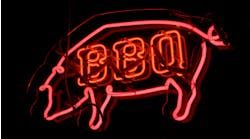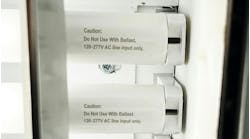DOE Publishes Final Rule on Life Expectancy Test Procedures for LED Lamps
The U.S Department of Energy (DOE) published a final rule in the Federal Register adopting a test procedure for integrated light-emitting diode (LED) lamps. This final rule amends the LED lamps test procedure by allowing for time to failure measurements to be taken at elevated temperatures consistent with the Energy Star program requirements.
Based on stakeholder feedback since the publication of the July 2016 LED TP final rule, DOE proposed in the November 2016 LED TP NOPR (test procedure notice of proposed rulemaking) to allow time to failure measurements collected for DOE's LED lamps test procedure to be taken at elevated temperatures. In this final rule, DOE amends the test procedure for integrated LED lamps as proposed in the NOPR.
The original testing procedure from July 2016 incorporated test procedures from the Illuminating Engineering Society’s (IES) LM-84-14 and TM-28-14 for projecting time-to-failure of LED lamps based on lumen maintenance data. After the rule’s publication, the National Electrical Manufacturers Association (NEMA) requested that DOE approve the use of test results from the Elevated Temperature Life Test contained in the Energy Star Lamps Specification V2.0, which NEMA said are more stringent. DOE compared the rules and found that the Energy Star requirements’ use of elevated ambient temperatures during lumen maintenance testing were more stringent and incorporated those aspects of the Energy Star test into the new rules. LED lamps are sensitive to changes in ambient temperature, generally performing less favorably at higher temperatures, DOE said in its discussion of the new rule in the Federal Register.
The new rule takes effect October 22, 2018. Representations of energy use or energy efficiency must be based on testing in accordance with the amended test procedures beginning 180 days after its publication. It was published on Sept. 21. DOE notes that the amended test procedure allows measurements to be taken at elevated temperatures but does not require it.



